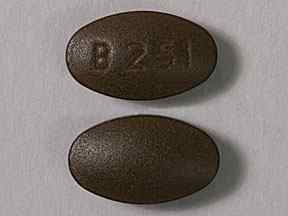Butabarbital/hyoscyamine/phenazopyridine Interactions
There are 713 drugs known to interact with butabarbital/hyoscyamine/phenazopyridine, along with 33 disease interactions, and 2 alcohol/food interactions. Of the total drug interactions, 50 are major, 633 are moderate, and 30 are minor.
- View all 713 medications that may interact with butabarbital/hyoscyamine/phenazopyridine
- View butabarbital/hyoscyamine/phenazopyridine alcohol/food interactions (2)
- View butabarbital/hyoscyamine/phenazopyridine disease interactions (33)
Most frequently checked interactions
View interaction reports for butabarbital / hyoscyamine / phenazopyridine and the medicines listed below.
- Adriamycin RDF (doxorubicin)
- Advil (ibuprofen)
- Afinitor Disperz (everolimus)
- Aleve (naproxen)
- Benadryl (diphenhydramine)
- Blenoxane (bleomycin)
- Brilinta (ticagrelor)
- Butalbital Compound (aspirin / butalbital / caffeine)
- Celexa (citalopram)
- Coumadin (warfarin)
- Cymbalta (duloxetine)
- Dexedrine (dextroamphetamine)
- Effexor (venlafaxine)
- Effexor XR (venlafaxine)
- Fiorinal (aspirin / butalbital / caffeine)
- Flexeril (cyclobenzaprine)
- Givlaari (givosiran)
- Humalog (insulin lispro)
- Keppra (levetiracetam)
- Lantus (insulin glargine)
- Linzess (linaclotide)
- Lioresal (baclofen)
- Maxalt-MLT (rizatriptan)
- Meticorten (prednisone)
- Mucinex Nightshift Sinus (acetaminophen / dextromethorphan / phenylephrine / triprolidine)
- Mustargen (mechlorethamine)
- Nasacort AQ (triamcinolone nasal)
- Navelbine (vinorelbine)
- Neoral (cyclosporine)
- Xanax (alprazolam)
Butabarbital/hyoscyamine/phenazopyridine alcohol/food interactions
There are 2 alcohol/food interactions with butabarbital / hyoscyamine / phenazopyridine.
Butabarbital/hyoscyamine/phenazopyridine disease interactions
There are 33 disease interactions with butabarbital / hyoscyamine / phenazopyridine which include:
- autonomic neuropathy
- GI obstruction
- glaucoma
- obstructive uropathy
- reactive airway diseases
- myasthenia gravis
- infectious diarrhea
- acute alcohol intoxication
- drug dependence
- liver disease
- porphyria
- rash
- respiratory depression
- G-6-PD deficiency
- hepatitis
- renal dysfunction
- cardiac disease
- tachycardia
- coronary artery disease
- gastric ulcer
- gastroesophageal reflux
- ulcerative colitis
- liver disease
- renal failure
- adrenal insufficiency
- depression
- hematologic toxicity
- osteomalacia
- paradoxical reactions
- hypertension
- hyperthyroidism
- diarrhea
- fever
Drug Interaction Classification
| Highly clinically significant. Avoid combinations; the risk of the interaction outweighs the benefit. | |
| Moderately clinically significant. Usually avoid combinations; use it only under special circumstances. | |
| Minimally clinically significant. Minimize risk; assess risk and consider an alternative drug, take steps to circumvent the interaction risk and/or institute a monitoring plan. | |
| No interaction information available. |
See also:
Further information
Always consult your healthcare provider to ensure the information displayed on this page applies to your personal circumstances.


